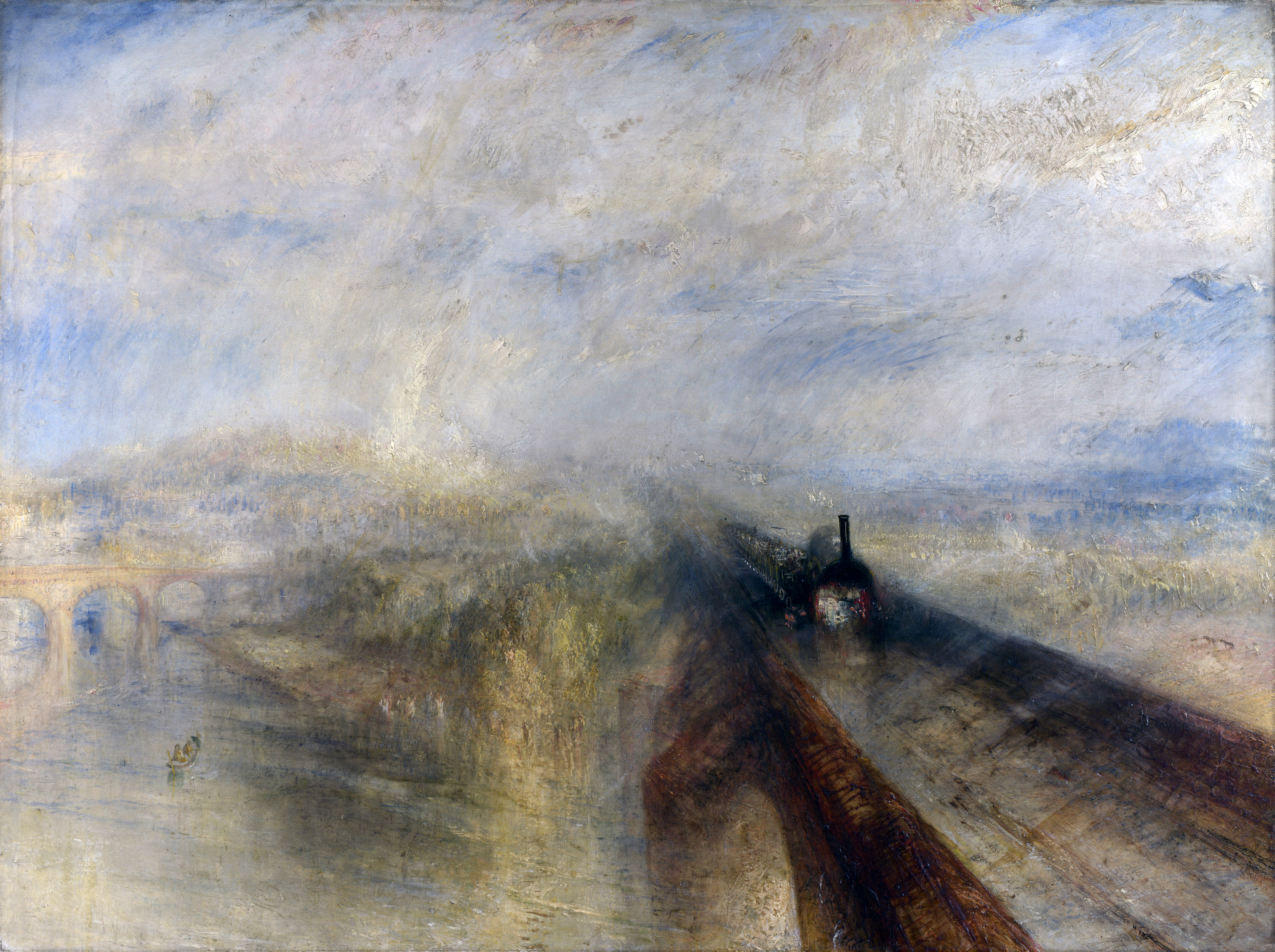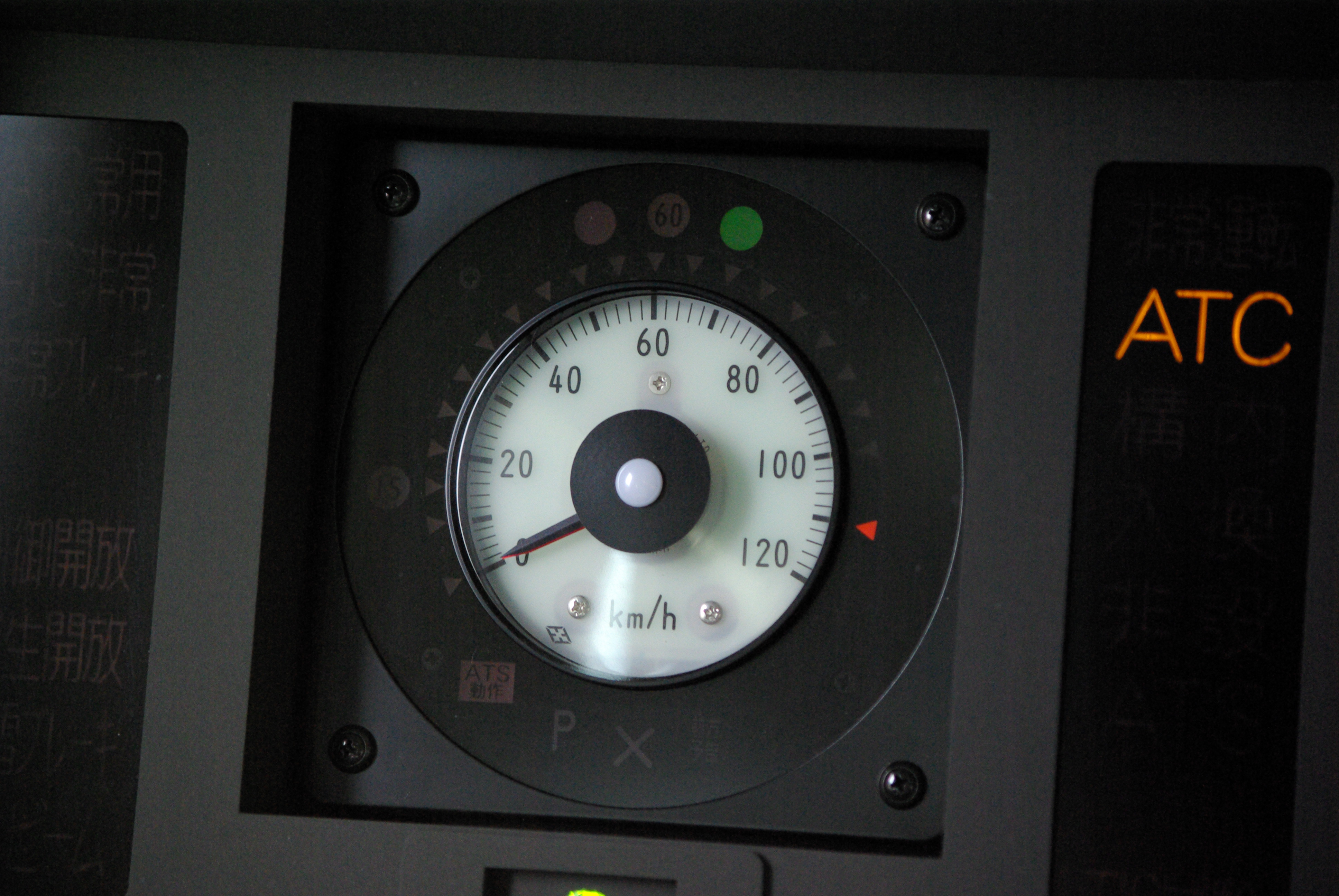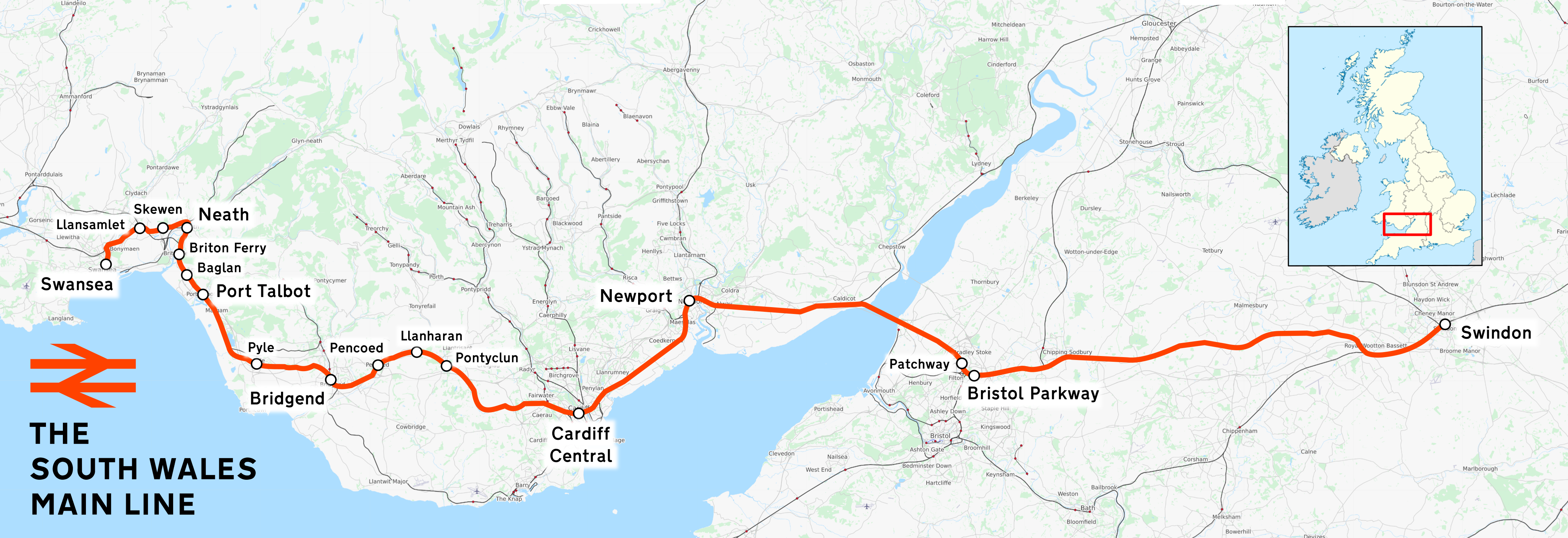|
Great Western Main Line
The Great Western Main Line (GWML) is a main line railway in England that runs between London Paddington and . It connects to other main lines such as those from Reading to Penzance and Swindon to Swansea. The GWML is presently a part of the national rail system managed by Network Rail, while the majority of passenger services upon it are provided by the current Great Western Railway franchise. The GWML was built by the original Great Western Railway company between 1838 and 1841, as a dual track line in the broad gauge. The broad gauge remained in use until 1892, after which standard gauge track has been exclusively used. Between 1877 and 1932, many sections of the GWML were widened to four tracks. During 1908, Automatic Train Control (ATC) was introduced as a safety measure. In 1948, the Great Western Railway, and thus the GWML, was merged into the Western Region of British Railways. During the 1970s, the GWML was upgraded to support higher line speeds, as a result o ... [...More Info...] [...Related Items...] OR: [Wikipedia] [Google] [Baidu] |
Maidenhead Railway Bridge
Maidenhead Railway Bridge, also known as Maidenhead Viaduct and The Sounding Arch, carries the Great Western Main Line (GWML) over the River Thames between Maidenhead, Berkshire and Taplow, Buckinghamshire, England. It is a single structure of two tall, wide red-brick arches abutment, buttressed by two over-land smaller arches. It crosses the river on the Maidenhead-Bray Reach, between Boulter's Lock and Bray Lock, and is near-centrally pier (architecture), rooted in the downstream end of Guards Club Island, a very small island. The Maidenhead Bridge was designed by the Great Western Railway Company engineer, the noted mechanical engineering, mechanical and civil engineer Isambard Kingdom Brunel. It was completed in 1838, but not brought into use until 1 July 1839. While it was being constructed, the innovative low-rise arches of the structure attracted considerable criticism and controversy, relating to their alleged lack of stability. As a result, the centring for the arche ... [...More Info...] [...Related Items...] OR: [Wikipedia] [Google] [Baidu] |
25 KV AC
Railway electrification systems using alternating current (AC) at are used worldwide, especially for high-speed rail. It is usually supplied at the standard utility frequency (typically 50 or 60Hz), which simplifies traction substations. The development of 25kV AC electrification is closely connected with that of successfully using utility frequency. This electrification is ideal for railways that cover long distances or carry heavy traffic. After some experimentation before World War II in Hungary and in the Black Forest in Germany, it came into widespread use in the 1950s. One of the reasons it was not introduced earlier was the lack of suitable small and lightweight control and rectification equipment before the development of solid-state rectifiers and related technology. Another reason was the increased clearance required under bridges and in tunnels, which would have required major civil engineering in order to provide the increased clearance to live parts. Where existin ... [...More Info...] [...Related Items...] OR: [Wikipedia] [Google] [Baidu] |
Automatic Train Control
Automatic train control (ATC) is a general class of train protection systems for railways that involves a speed control mechanism in response to external inputs. For example, a system could effect an emergency brake application if the driver does not react to a signal at danger. ATC systems tend to integrate various cab signalling technologies and they use more granular deceleration patterns in lieu of the rigid stops encountered with the older automatic train stop (ATS) technology. ATC can also be used with automatic train operation (ATO) and is usually considered to be the safety-critical part of a railway system. There have been numerous different safety systems referred to as "automatic train control" over time. The first experimental apparatus was installed on the Henley branch line in January 1906 by the Great Western Railway, although it would now be referred to as an automatic warning system (AWS) because the driver retained full command of braking. The term is especi ... [...More Info...] [...Related Items...] OR: [Wikipedia] [Google] [Baidu] |
Broad Gauge
A broad-gauge railway is a railway with a track gauge (the distance between the rails) broader than the used by standard-gauge railways. Broad gauge of , more known as Russian gauge, is the dominant track gauge in former Soviet Union countries (CIS states, Baltic states, Rail transport in Georgia (country), Georgia, Ukraine) and Rail transport in Mongolia, Mongolia. Broad gauge of , commonly known as five foot gauge, is mainly used in Rail transport in Finland, Finland. Broad gauge of , commonly known as Irish gauge, is the dominant track gauge in Ireland, the Australian state of Rail transport in Victoria, Victoria and Railways in Adelaide, Adelaide in South Australia and Rail transport in Brazil, passenger trains of Brazil. Broad gauge of , commonly known as Iberian gauge, is the dominant track gauge in Spain and Portugal. Broad gauge of , commonly known as Indian gauge, is the dominant track gauge in Indian Railways, India, Pakistan Railways, Pakistan, Bangladesh, Sri Lanka ... [...More Info...] [...Related Items...] OR: [Wikipedia] [Google] [Baidu] |
Great Western Railway
The Great Western Railway (GWR) was a History of rail transport in Great Britain, British railway company that linked London with the southwest, west and West Midlands (region), West Midlands of England and most of Wales. It was founded in 1833, received its enabling act of Parliament on 31 August 1835 and ran its first trains in 1838 with the initial route completed between London and Bristol in 1841. It was engineered by Isambard Kingdom Brunel, who chose a broad gauge of —later slightly widened to —but, from 1854, a series of Consolidation (business), amalgamations saw it also operate Standard gauge, standard-gauge trains; the last broad-gauge services were operated in 1892. The GWR was the only company to keep its identity through the Railways Act 1921, which amalgamated it with the remaining independent railways within its territory, and it was finally merged at the end of 1947 when it was Nationalization, nationalised and became the Western Region of British Railways. ... [...More Info...] [...Related Items...] OR: [Wikipedia] [Google] [Baidu] |
South Wales Main Line
The South Wales Main Line (), originally known as the London, Bristol and South Wales Direct Railway or simply as the Bristol and South Wales Direct Railway, is a branch of the Great Western Main Line in Great Britain. It diverges from the core London-Bristol line at Royal Wootton Bassett beyond Swindon, first calling at Bristol Parkway, after which the line continues through the Severn Tunnel into South Wales. Much of the South Wales Main Line was built between the 1830s and 1886; originally trains to and from destinations in England ran via Chepstow, Gloucester and Stroud, joining the Great Western Main Line at Swindon. A more direct route was challenging yet desirable, leading to the construction of the line's most prominent civil engineering feature, the Severn Tunnel. Completed in 1886, it permitted a significant reduction in journey times between various destinations, especially after the construction of the Badminton Line in 1903. During the British Rail era, th ... [...More Info...] [...Related Items...] OR: [Wikipedia] [Google] [Baidu] |
Reading To Taunton Line
Reading is the process of taking in the sense or meaning of symbols, often specifically those of a written language, by means of sight or touch. For educators and researchers, reading is a multifaceted process involving such areas as word recognition, orthography (spelling), alphabetics, phonics, phonemic awareness, vocabulary, comprehension, fluency, and motivation. Other types of reading and writing, such as pictograms (e.g., a hazard symbol and an emoji), are not based on speech-based writing systems. The common link is the interpretation of symbols to extract the meaning from the visual notations or tactile signals (as in the case of braille). Overview Reading is generally an individual activity, done silently, although on occasion a person reads out loud for other listeners; or reads aloud for one's own use, for better comprehension. Before the reintroduction of separated text (spaces between words) in the late Middle Ages, the ability to read silently was cons ... [...More Info...] [...Related Items...] OR: [Wikipedia] [Google] [Baidu] |
Paddington Railway Station
Paddington, also known as London Paddington, is a London railway station and London Underground station complex, located on Praed Street in the Paddington area. The site has been the London terminus of services provided by the Great Western Railway and its successors since 1838. Much of the main line station dates from 1854 and was designed by Isambard Kingdom Brunel. As of the 2023–24 Office of Rail & Road Statistics, it is the second busiest station in the United Kingdom, after London Liverpool Street, with 66.9 million entries and exits. Paddington is the London terminus of the Great Western Main Line; passenger services are primarily operated by Great Western Railway, which provides commuter and regional passenger services to west London and the Thames Valley region, as well as long-distance intercity services to South West England and South Wales. The station is the eastern terminus for Heathrow Express. Elizabeth line services run through Paddington westwards to ... [...More Info...] [...Related Items...] OR: [Wikipedia] [Google] [Baidu] |
Railway
Rail transport (also known as train transport) is a means of transport using wheeled vehicles running in railway track, tracks, which usually consist of two parallel steel railway track, rails. Rail transport is one of the two primary means of land transport, next to road transport. It is used for about 8% of passenger and rail freight transport, freight transport globally, thanks to its Energy efficiency in transport, energy efficiency and potentially high-speed rail, high speed.Rolling stock on rails generally encounters lower friction, frictional resistance than rubber-tyred road vehicles, allowing rail cars to be coupled into longer trains. Power is usually provided by Diesel locomotive, diesel or Electric locomotive, electric locomotives. While railway transport is capital intensity, capital-intensive and less flexible than road transport, it can carry heavy loads of passengers and cargo with greater energy efficiency and safety. Precursors of railways driven by human or an ... [...More Info...] [...Related Items...] OR: [Wikipedia] [Google] [Baidu] |
Main Line (railway)
The main line, or mainline in American English, of a railway is a track that is used for through trains or is the principal artery of the system from which branch lines, yards, sidings, and spurs are connected. It generally refers to a route between towns, as opposed to a route providing suburban or metro services. It may also be called a trunk line, for example the Grand Trunk Railway The Grand Trunk Railway (; ) was a Rail transport, railway system that operated in the Provinces and territories of Canada, Canadian provinces of Quebec and Ontario and in the List of states and territories of the United States, American sta ... in Canada, or the Trunk Line in Norway. For capacity reasons, main lines in many countries have at least a double track and often contain multiple parallel tracks. Main line tracks are typically operated at higher speeds than branch lines and are generally built and maintained to a higher standard than yards and branch lines. Main lines may als ... [...More Info...] [...Related Items...] OR: [Wikipedia] [Google] [Baidu] |
Great Western Main Line Map
Great may refer to: Descriptions or measurements * Great, a relative measurement in physical space, see Size * Greatness, being divine, majestic, superior, majestic, or transcendent People * List of people known as "the Great" * Artel Great (born 1981), American actor * Great Osobor (born 2002), Spanish-born British basketball player Other uses * ''Great'' (1975 film), a British animated short about Isambard Kingdom Brunel * ''Great'' (2013 film), a German short film * Great (supermarket), a supermarket in Hong Kong * GReAT, Graph Rewriting and Transformation, a Model Transformation Language * Gang Resistance Education and Training Gang Resistance Education And Training, abbreviated G.R.E.A.T., provides a school-based, police officer-instructed program in America that includes classroom instruction and a variety of learning activities. The program was originally adminis ..., or GREAT, a school-based and police officer-instructed program * Global Research and Analysis Te ... [...More Info...] [...Related Items...] OR: [Wikipedia] [Google] [Baidu] |
Automatic Train Protection (United Kingdom)
Automatic Train Protection (ATP) is a method of beacon based railway cab signalling developed by British Rail. The system is only installed on the Great Western Main Line between London Paddington and Bristol Temple Meads, and the Chiltern Main Line from London Marylebone to High Wycombe and Aylesbury. History Background A noticeable uptick in signal passed at danger (SPAD) instances in the 1980s led to calls for a new safety system to be adopted that would entirely prevent their occurrence; specifically, the report into the Clapham Junction rail crash (itself not a SPAD accident) specifically stipulated that British Rail (BR) was to fully implement such a system on nationwide basis within five years. From the onset, it was recognised that considerable work would be involved both to develop and deploy the envisioned system. Accordingly, in 1988, BR launched a three-year program to develop and deploy this new system, with the aim of starting its implementation b ... [...More Info...] [...Related Items...] OR: [Wikipedia] [Google] [Baidu] |








